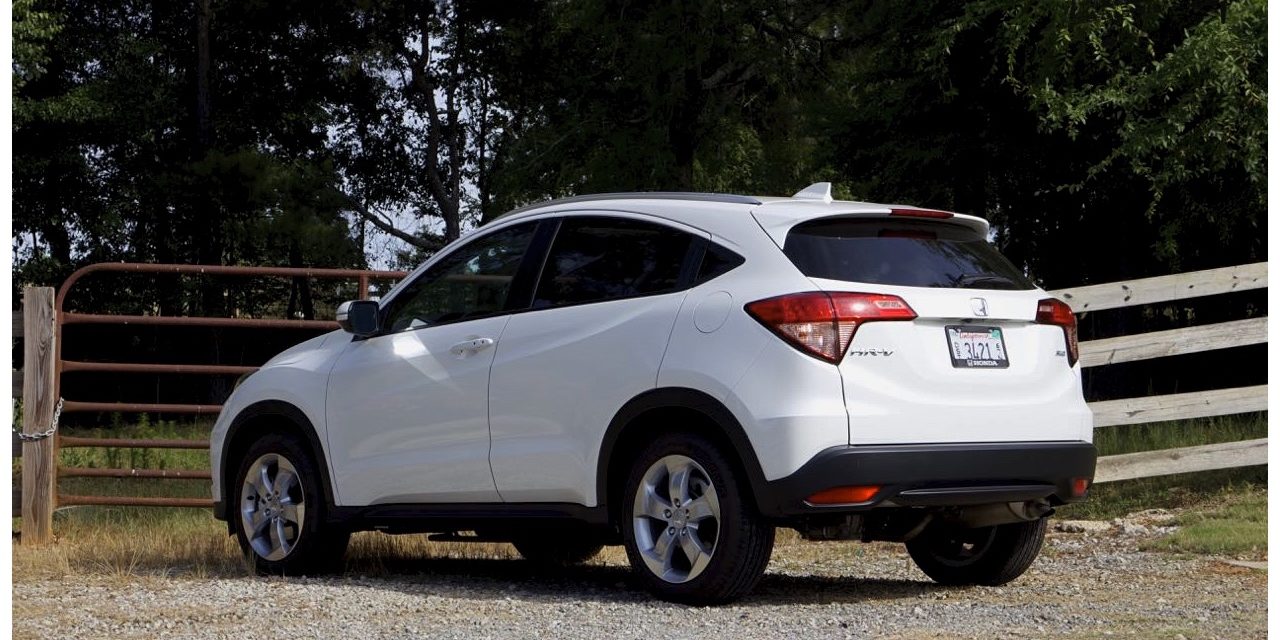If a small Crossover is what you’re looking for, you need to go drive the HRV before you make any impulsive decisions. Because in this segment, nearly ALL of the different brand’s/model’s exterior designs tend to be pretty lovable & attention-hogging. Kinda like a puppy at a pet store – the last one that jumped in your lap is the one you want to take home. That’s one of the main reasons this segment is gaining such popularity. Cars like the HRV, CX-3, Renegade, Soul, and even Juke are quirky-cool. Carefree. And they each shine in their own way.
The HRV is a little more ‘grown up’ than the others. A little more subtle, but also more sensible & refined. In a segment where it’s hard to find space (interior volume), the HRV finds it, and finds it well. Never underestimate Honda for cleverly finding ways to make the ‘whole’ greater than the sum of it’s parts. I easily got FOUR aftermarket wheels (mounted with tires) stacked in the trunk of the HRV… WITHOUT even having to fold down the rear seats. That’s HUGE for real-word application, because that means that a child-seat can remain in the car… and you can still run some pretty hefty errands. That would never happen in the CX-3 or the Juke.
The interior of the HRV is rather sophisticatedly sensible design, with clean, contemporary lines. It’s not over-designed, bulgy, and/or color-bursting like some others in the segment. The HRV reaches out to a customer who may want the size/dynamics of a small crossover, without feeling like a high school cheerleader.
And that strategy carries over through the exterior as well. Glance in the general direction of the HRV in traffic, and you might overlook it. But look again, and you’ll notice smart moves, like:
1) The rear door handles are moved up & out of sight, to create a more coupe-like, sporty/edgy silhouette.
2) The roofline arches/flexes up in the rear, to yield more headroom & more cargo room inside.
If you need basic, flexible, economical, smart transportation in a small package, the HRV is a given. But if there’s one place where the HRV will let you down – it’s performance. The Juke, for example, offers a sporty Nismo R edition, which is an blast to rip around town. The Renegade offers a Trailhawk 4×4 to get you off the grid a little bit. The HRV offers no such animal. And yeah, I realize that I’m a car guy with biased opinions & unrealistic expectations. But I personally feel like a huge component/ingredient of the ‘small crossover’ is that it HAS to be surprisingly fun to drive. If not – then just finance the extra couple thousand and get a more functional, larger mid-size crossover… because there’s not a huge price jump.
The HRV chassis is well-built & fun enough to drive. Honda did a great job there; it handles & corners well. But the motor barely has enough power to get out of it’s own way. And to add insult to injury, is the CVT transmission. Basically – what we had in our test-model, was a 1.5 liter engine making 140 crank horsepower, in a 3,000-pound car, with an emasculating CVT transmission, trying to run power to all 4 wheels. …You do the math.
And to make it all a wash – we were getting about 28 mpgs. That’s just not enough. Not when the full-size Honda Pilot was getting 26.
And to beat you down even more, there is a lighted ring around the speedometer that lights up GREEN if you’re doing good on your economy, and ORANGE if you’re doing bad. So the HRV is constantly reminding you of how ‘average’ it is. My neighbor drove the car, because she’s in the market for a good commuter (specifically an HRV or a CX-3), and that lighted ring may have been the deal-breaker.













